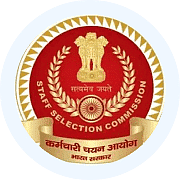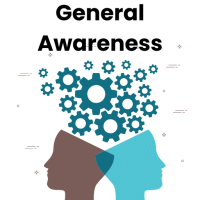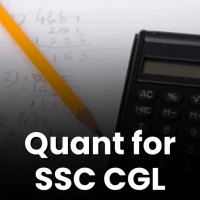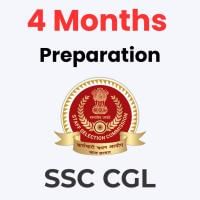SSC CGL Exam > SSC CGL Questions > In the following questions, some parts of the...
Start Learning for Free
In the following questions, some parts of the sentences have errors and some have none. Find out which part of a sentence has an error. The number of that part is your answer. If a sentence is free from error, your answer is (d). i.e. No error.
Q. When an university formulates (a) / new regulations, (b) / it must circulate its decision to the faculty. (c) / No error (d)
- a)When an university formulates
- b)new regulations,
- c)it must circulate its decision to the faculty
- d)No error
Correct answer is option 'A'. Can you explain this answer?
Most Upvoted Answer
In the following questions, some parts of the sentences have errors an...
Errors in the Sentence:
There is an error in part (a) of the sentence:
Explanation:
Use of Article:
The error lies in the use of the article "an" before the word "university." The correct article to use before the word "university" is "a" because the sound "y" at the beginning of the word "university" is a consonant sound.
Corrected Sentence:
When a university formulates new regulations, it must circulate its decision to the faculty.
Therefore, the correct answer is option (a).
There is an error in part (a) of the sentence:
Explanation:
Use of Article:
The error lies in the use of the article "an" before the word "university." The correct article to use before the word "university" is "a" because the sound "y" at the beginning of the word "university" is a consonant sound.
Corrected Sentence:
When a university formulates new regulations, it must circulate its decision to the faculty.
Therefore, the correct answer is option (a).

|
Explore Courses for SSC CGL exam
|

|
Similar SSC CGL Doubts
Question Description
In the following questions, some parts of the sentences have errors and some have none. Find out which part of a sentence has an error. The number of that part is your answer. If a sentence is free from error, your answer is (d). i.e. No error.Q.When an university formulates (a) / new regulations, (b) / it must circulate its decision to the faculty. (c) / No error (d)a)When an university formulatesb)new regulations,c)it must circulate its decision to the facultyd)No errorCorrect answer is option 'A'. Can you explain this answer? for SSC CGL 2025 is part of SSC CGL preparation. The Question and answers have been prepared according to the SSC CGL exam syllabus. Information about In the following questions, some parts of the sentences have errors and some have none. Find out which part of a sentence has an error. The number of that part is your answer. If a sentence is free from error, your answer is (d). i.e. No error.Q.When an university formulates (a) / new regulations, (b) / it must circulate its decision to the faculty. (c) / No error (d)a)When an university formulatesb)new regulations,c)it must circulate its decision to the facultyd)No errorCorrect answer is option 'A'. Can you explain this answer? covers all topics & solutions for SSC CGL 2025 Exam. Find important definitions, questions, meanings, examples, exercises and tests below for In the following questions, some parts of the sentences have errors and some have none. Find out which part of a sentence has an error. The number of that part is your answer. If a sentence is free from error, your answer is (d). i.e. No error.Q.When an university formulates (a) / new regulations, (b) / it must circulate its decision to the faculty. (c) / No error (d)a)When an university formulatesb)new regulations,c)it must circulate its decision to the facultyd)No errorCorrect answer is option 'A'. Can you explain this answer?.
In the following questions, some parts of the sentences have errors and some have none. Find out which part of a sentence has an error. The number of that part is your answer. If a sentence is free from error, your answer is (d). i.e. No error.Q.When an university formulates (a) / new regulations, (b) / it must circulate its decision to the faculty. (c) / No error (d)a)When an university formulatesb)new regulations,c)it must circulate its decision to the facultyd)No errorCorrect answer is option 'A'. Can you explain this answer? for SSC CGL 2025 is part of SSC CGL preparation. The Question and answers have been prepared according to the SSC CGL exam syllabus. Information about In the following questions, some parts of the sentences have errors and some have none. Find out which part of a sentence has an error. The number of that part is your answer. If a sentence is free from error, your answer is (d). i.e. No error.Q.When an university formulates (a) / new regulations, (b) / it must circulate its decision to the faculty. (c) / No error (d)a)When an university formulatesb)new regulations,c)it must circulate its decision to the facultyd)No errorCorrect answer is option 'A'. Can you explain this answer? covers all topics & solutions for SSC CGL 2025 Exam. Find important definitions, questions, meanings, examples, exercises and tests below for In the following questions, some parts of the sentences have errors and some have none. Find out which part of a sentence has an error. The number of that part is your answer. If a sentence is free from error, your answer is (d). i.e. No error.Q.When an university formulates (a) / new regulations, (b) / it must circulate its decision to the faculty. (c) / No error (d)a)When an university formulatesb)new regulations,c)it must circulate its decision to the facultyd)No errorCorrect answer is option 'A'. Can you explain this answer?.
Solutions for In the following questions, some parts of the sentences have errors and some have none. Find out which part of a sentence has an error. The number of that part is your answer. If a sentence is free from error, your answer is (d). i.e. No error.Q.When an university formulates (a) / new regulations, (b) / it must circulate its decision to the faculty. (c) / No error (d)a)When an university formulatesb)new regulations,c)it must circulate its decision to the facultyd)No errorCorrect answer is option 'A'. Can you explain this answer? in English & in Hindi are available as part of our courses for SSC CGL.
Download more important topics, notes, lectures and mock test series for SSC CGL Exam by signing up for free.
Here you can find the meaning of In the following questions, some parts of the sentences have errors and some have none. Find out which part of a sentence has an error. The number of that part is your answer. If a sentence is free from error, your answer is (d). i.e. No error.Q.When an university formulates (a) / new regulations, (b) / it must circulate its decision to the faculty. (c) / No error (d)a)When an university formulatesb)new regulations,c)it must circulate its decision to the facultyd)No errorCorrect answer is option 'A'. Can you explain this answer? defined & explained in the simplest way possible. Besides giving the explanation of
In the following questions, some parts of the sentences have errors and some have none. Find out which part of a sentence has an error. The number of that part is your answer. If a sentence is free from error, your answer is (d). i.e. No error.Q.When an university formulates (a) / new regulations, (b) / it must circulate its decision to the faculty. (c) / No error (d)a)When an university formulatesb)new regulations,c)it must circulate its decision to the facultyd)No errorCorrect answer is option 'A'. Can you explain this answer?, a detailed solution for In the following questions, some parts of the sentences have errors and some have none. Find out which part of a sentence has an error. The number of that part is your answer. If a sentence is free from error, your answer is (d). i.e. No error.Q.When an university formulates (a) / new regulations, (b) / it must circulate its decision to the faculty. (c) / No error (d)a)When an university formulatesb)new regulations,c)it must circulate its decision to the facultyd)No errorCorrect answer is option 'A'. Can you explain this answer? has been provided alongside types of In the following questions, some parts of the sentences have errors and some have none. Find out which part of a sentence has an error. The number of that part is your answer. If a sentence is free from error, your answer is (d). i.e. No error.Q.When an university formulates (a) / new regulations, (b) / it must circulate its decision to the faculty. (c) / No error (d)a)When an university formulatesb)new regulations,c)it must circulate its decision to the facultyd)No errorCorrect answer is option 'A'. Can you explain this answer? theory, EduRev gives you an
ample number of questions to practice In the following questions, some parts of the sentences have errors and some have none. Find out which part of a sentence has an error. The number of that part is your answer. If a sentence is free from error, your answer is (d). i.e. No error.Q.When an university formulates (a) / new regulations, (b) / it must circulate its decision to the faculty. (c) / No error (d)a)When an university formulatesb)new regulations,c)it must circulate its decision to the facultyd)No errorCorrect answer is option 'A'. Can you explain this answer? tests, examples and also practice SSC CGL tests.

|
Explore Courses for SSC CGL exam
|

|
Signup to solve all Doubts
Signup to see your scores go up within 7 days! Learn & Practice with 1000+ FREE Notes, Videos & Tests.





















